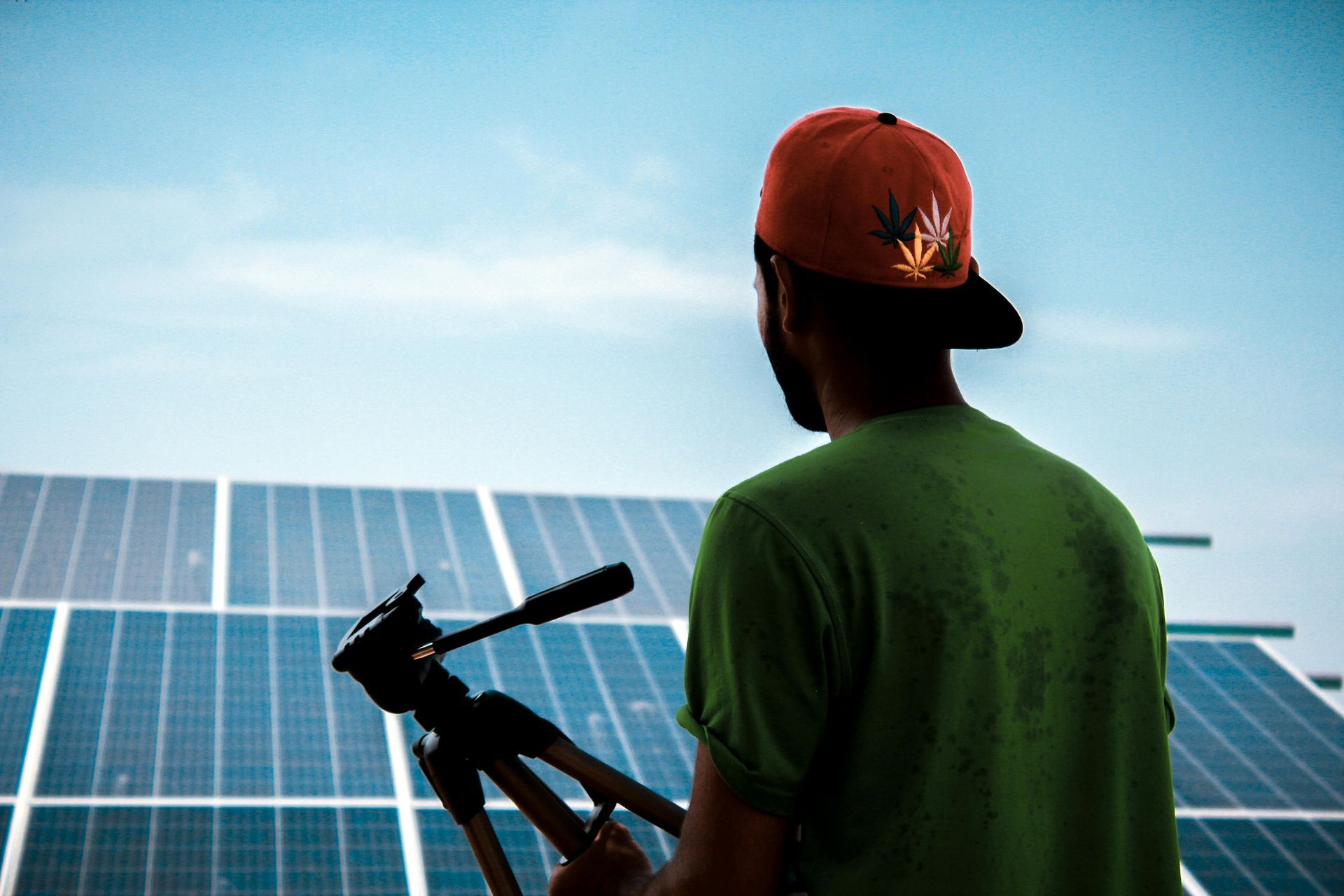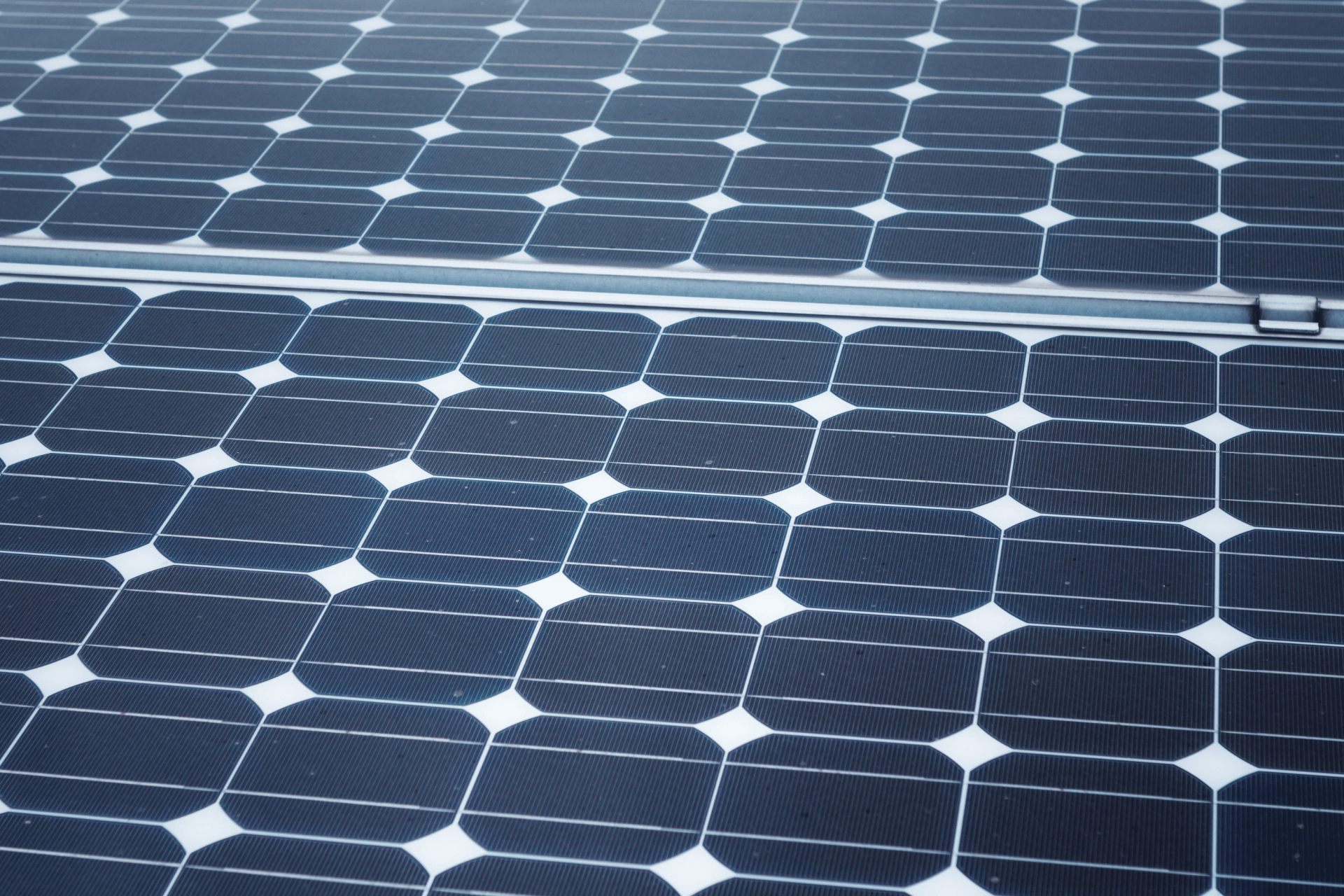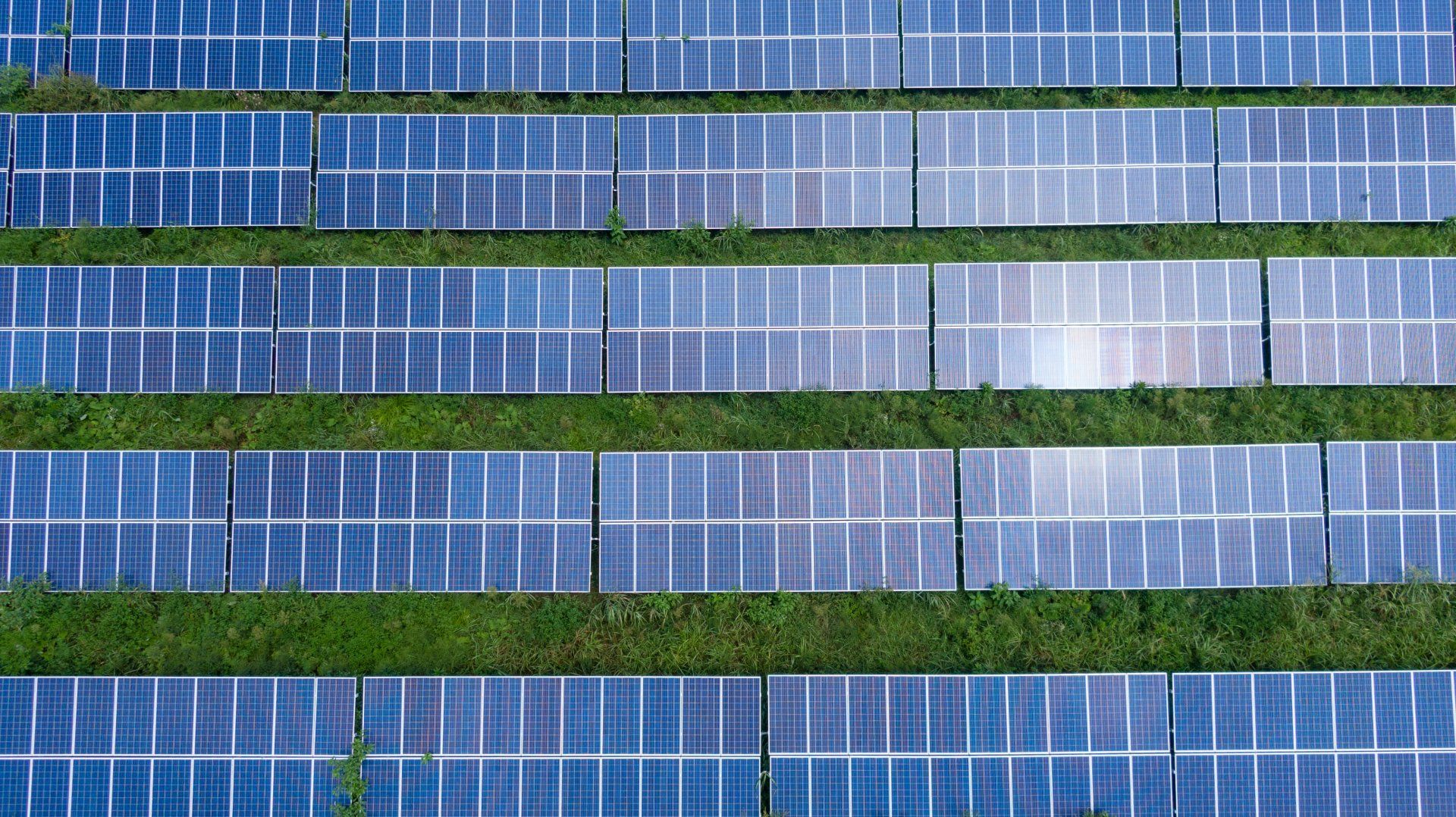GridTied vs OffGrid Solar Systems Which is Right for You
Are you considering going solar, but not sure whether to choose a grid-tied or off-grid system? Understanding the basics of solar energy systems is essential to make an informed decision.
We explore the benefits and equipment required for both grid-tied and off-grid solar systems. We also discuss hybrid solar systems and compare the differences between grid-tied and off-grid setups.
By the end of this article, you will have a clearer understanding of which system best suits your needs based on factors like budget, location, and energy consumption.
Let's dive in!
Introduction to Grid-Tied vs. Off-Grid Solar Systems
Understanding the differences between grid-tied and off-grid solar systems is crucial in determining the most suitable option for your energy needs and backup power requirements during grid power outages.
Grid-tied solar systems are connected to the utility grid, allowing you to leverage both solar power and conventional electricity. They provide cost-effective ways to supplement your energy usage while potentially saving on utility bills. On the other hand, off-grid systems operate independently, making them ideal for remote locations or areas without access to the main electricity grid. They offer complete autonomy but require careful planning to ensure continuous power supply.
When deciding between the two, it is important to consider factors such as sunlight availability, energy consumption patterns, and budget constraints. Opting for the correct system that aligns with your specific requirements is essential to maximize the benefits of solar energy and ensure reliable power generation.
Understanding the Basics of Solar Energy Systems
Solar energy systems harness sunlight through solar panels, converting it into DC electricity before transforming it into usable AC electricity for powering homes and businesses.
This conversion process follows the principle of the photovoltaic effect, where solar cells within the panels absorb sunlight and release electrons to create an electric current. To ensure optimal efficiency, inverters play a vital role in converting DC to AC electricity. During the transmission of electricity, there are inherent losses due to resistance in cables and components. Solar technology companies focus on developing innovative solutions to minimize these losses, improve energy storage capabilities, and enhance the overall performance of solar energy systems.
Grid-Tied Solar Systems
Grid-tied solar systems are interconnected with the utility power grid, enabling seamless exchange of solar-generated electricity and grid power to meet energy demands efficiently.
This connection allows solar systems to export excess power back to the grid, reducing reliance on stored energy or backup power sources. Through net metering , homeowners with grid-tied systems can receive credits on their utility bills for the surplus electricity they contribute. Utility companies play a crucial role in regulating this back-and-forth flow of electricity, ensuring a balanced and stable grid operation. Power meters track the energy flow in both directions, enabling accurate measurement of energy usage and production for billing and monitoring purposes.
Benefits of Grid-Tied Systems
The benefits of grid-tied solar systems include reduced electricity bills, lower reliance on grid power, and potential eligibility for federal tax credits, making them a cost-effective and environmentally friendly choice.
By connecting to the utility grid, grid-tied systems allow solar panel owners to offset their energy usage with the clean power generated by their rooftop panels. This results in significant savings on electricity bills as excess energy produced can be fed back into the grid or stored for later use.
These systems contribute to energy independence by providing a reliable source of electricity, reducing the reliance on traditional fossil fuel-based energy sources. The ability to access free sunlight for power generation enhances sustainability and lowers carbon footprints.
The financial benefits of these systems go beyond just savings on monthly bills. Owners can take advantage of various incentives, including federal tax credits that help offset the initial installation costs, making solar energy more accessible and affordable for homeowners."
Equipment Required for Grid-Tied Systems
Essential equipment for grid-tied solar systems includes inverters for converting DC to AC electricity and solar charge controllers for regulating the charging process, ensuring optimal performance.
Grid-tied systems are designed to efficiently synchronize with the utility grid, making these components crucial for seamless energy generation and consumption.
Inverters play a pivotal role in converting the direct current (DC) produced by solar panels into alternating current (AC) that can be used by household appliances and fed back into the grid.
- Solar charge controllers are essential for managing the flow of electricity from the solar panels to the batteries, ensuring proper charging and preventing overcharging or deep discharging, which can harm the battery lifespan.
- These components work together to optimize the efficiency and reliability of solar power systems, playing a key role in maintaining a stable and productive grid-tied setup.
Off-Grid Solar Systems
Off-grid solar systems operate independently of the utility grid, relying on battery banks, typically with lead-acid batteries or advanced solar battery technologies, to store excess energy for use during periods of low sunlight.
In an off-grid setup, the main components include:
- Solar panels: capture sunlight and convert it into DC electricity.
- Charge controller: regulates the amount of electricity that goes into the batteries to prevent overcharging.
- Battery bank: stores the DC electricity generated by the solar panels.
- Inverter: converts DC electricity stored in the batteries into usable AC electricity for appliances and devices during times when sunlight is scarce.
Advantages of Off-Grid Solar Systems
Off-grid solar systems offer energy independence, reliable power supply during grid outages, and the flexibility to install systems in remote locations, supported by advanced lithium battery technology for efficient energy storage.The given text is already enclosed within
tags, so it does not require any further formatting.
Essential Equipment for Off-Grid Systems
Key components of off-grid solar systems include inverters for DC to AC conversion, batteries for energy storage, and solar charge controllers for optimizing charging cycles, ensuring reliable off-grid power supply.
Among these,
- inverters play a crucial role in converting the direct current (DC) electricity generated by solar panels into alternating current (AC) electricity that can be used to power household appliances and devices. This transformation allows for compatibility with standard electrical outlets and the grid, making it easier to utilize solar energy effectively.
- Batteries are essential for storing excess energy generated by the solar panels during peak sunlight hours. This stored energy can then be used during periods of low sunlight or at night when the panels are not producing electricity, ensuring a continuous power supply for off-grid applications.
- Solar charge controllers are responsible for efficiently managing the charging process of the batteries by regulating the voltage and current from the solar panels. This helps prevent overcharging and extends the lifespan of the batteries while maximizing their storage capacity and overall efficiency.
Hybrid Solar Systems
Hybrid solar systems combine the benefits of grid-tied and off-grid setups, utilizing a mix of solar panels and batteries to provide continuous power supply while offering backup capabilities during grid outages.
These systems are designed to maximize energy efficiency by harnessing sunlight through solar panels, converting it into electricity stored in the batteries for later use. With their dual functionality, hybrid solar systems offer the flexibility to meet regular energy needs on a day-to-day basis, while also serving as a reliable backup power source when the grid fails. The integration of smart inverters in these systems further enhances their performance by optimizing power flow and ensuring seamless transitions between grid-connected and standalone modes.
Benefits of Hybrid Solar Systems
Hybrid solar systems offer the advantages of grid-tied systems for stable power supply, coupled with the self-sufficiency of off-grid setups, making them a versatile solution for meeting diverse energy demands and ensuring backup power during emergencies.
One key benefit of hybrid systems is their ability to seamlessly switch between grid power and stored solar energy, providing continuous electricity supply even when the grid is down. This flexibility ensures energy independence and significantly reduces reliance on traditional power sources.
The combination of solar panels and battery storage in hybrid setups enhances system reliability by storing excess energy for use at night or during cloudy weather, ensuring a consistent power supply for residential or commercial properties.
Equipment Needed for Hybrid Solar Systems
Essential components of hybrid solar systems include inverters for converting electricity and battery banks for energy storage, enabling seamless integration of grid-tied and off-grid functionalities for continuous power supply.
In terms of inverters in a hybrid system, they play a crucial role in converting the direct current (DC) generated by solar panels into alternating current (AC) that can be used to power electrical devices. The inverter also regulates the voltage and frequency of the electricity to ensure compatibility with the grid or internal system requirements.
On the other hand, battery banks serve as the storage component of the system, storing excess energy generated during peak sunlight hours for use during periods of low sunlight or in the event of a power outage. These batteries provide backup power, allowing for continuous electricity supply even when solar panels are not actively generating electricity.
Comparing Grid-Tied and Off-Grid Solar Systems
In comparing grid-tied and off-grid solar systems, key differences lie in their connection to the utility grid, energy independence, and reliance on battery storage for uninterrupted power supply, catering to varying energy needs and preferences.
Grid-tied systems are directly connected to the utility grid, which allows for selling excess power back to the grid and the ability to draw power from the grid when solar production is low. On the contrary, off-grid systems operate independently, relying solely on solar panels and battery storage for all energy needs, offering complete autonomy from external power sources.
Energy autonomy is a critical factor that distinguishes the two systems. While grid-tied setups provide cost-efficiency and flexibility with grid access, off-grid installations offer self-sufficiency and resilience to grid failures, making them ideal for remote locations or areas with unreliable grid connections.
Distinguishing Between Grid-Tied and Off-Grid Systems
The distinction between grid-tied and off-grid solar systems lies in their connection to the utility grid and battery storage capacity, with grid-tied setups offering seamless grid interaction and off-grid systems ensuring self-sufficiency through efficient energy storage solutions.
Grid-tied systems are directly linked to the utility grid, allowing for the transfer of excess power back to the grid during sunny days and drawing electricity when needed. This interconnection ensures a reliable power supply and the potential for net metering benefits.
In contrast, off-grid systems operate autonomously without grid connectivity, relying solely on battery storage to meet energy demands. These systems provide energy independence, making them ideal for remote locations or areas with unreliable grid access.
Factors to Consider in Choosing the Right System
Several critical factors must be considered when selecting the appropriate solar system, including budget constraints, location-specific requirements, and energy consumption patterns to ensure optimal system performance and cost-effectiveness.
- In terms of budget constraints, it's essential to strike a balance between the initial investment and long-term savings potential. One must also take into account any available incentives, rebates, or financing options to make the solar system more affordable.
- Geographic suitability plays a pivotal role, with factors such as sun exposure, shading, and roof orientation influencing the efficiency of solar panels. Conducting a thorough site assessment is crucial to determine the ideal placement for maximum energy generation.
- Analyzing energy consumption patterns provides valuable insights into the size and type of solar system required. Understanding daily energy usage peaks and trends helps in customizing the system to meet household or commercial needs efficiently.
Budget Considerations
Budget considerations play a crucial role in determining the feasibility of solar panel installations, with factors like upfront costs, potential tax incentives, and long-term electricity savings influencing the decision-making process.
Cost analysis involves evaluating the initial investment required for solar panels, considering factors such as equipment costs, installation fees, and any additional components needed for the system. It's important to note that any tax credit benefits or rebates applicable can significantly offset these initial expenses, making solar energy more financially viable.
The long-term savings from reduced electricity bills can be substantial, contributing to a positive return on investment over time. By conducting a thorough financial assessment and factoring in potential incentives, homeowners can make informed decisions that align with both their environmental goals and their financial well-being .
Location Factors
Location factors, such as sunlight exposure, shading issues, utility company regulations, and power metering requirements, significantly impact the suitability and efficiency of solar panel installations in specific geographic areas.
When considering solar panel placement , the amount of direct sunlight that the panels can receive is crucial for maximizing energy production. The orientation of the panels towards the sun, typically facing south for optimal exposure, plays a key role. Potential obstructions such as buildings or trees that could cast shadows on the panels need to be taken into account to ensure consistent energy generation.
Regulatory considerations, including permits, zoning laws, and grid connection regulations, influence where solar panels can be installed. Complying with these regulations is essential for a smooth installation process and long-term operation of the system.
Energy Consumption Needs
Assessing energy consumption needs is vital for determining the size, capacity, and configuration of a solar system , ensuring that it aligns with the household or business requirements for reliable and efficient power generation.
Energy analysis plays a crucial role in the initial stages of solar system planning. Through load assessments, one can accurately gauge the amount of electricity needed, considering seasonal variations and peak demand periods. These assessments are fundamental in determining the optimal system size to meet the energy needs effectively.
System sizing involves detailed calculations to match the power generated with the expected consumption, ensuring that the installation is neither undersized to cause power shortages nor oversized, leading to unnecessary expenses and inefficiencies.
Configuration considerations in solar system planning encompass the arrangement of components such as panels, inverters, and batteries to maximize energy capture and utilization. The optimal configuration not only impacts energy efficiency but also influences the overall performance and longevity of the system.
Conclusion
Understanding the nuances of solar panel systems, including grid-tied, off-grid, and hybrid options, is essential for making informed decisions that align with energy needs, budget constraints, and potential tax benefits.
When evaluating your energy needs, it's crucial to consider factors such as your average electricity consumption, peak usage times, and any future expansion plans that may impact the size and capacity of your solar system.
Additionally, financial considerations play a significant role in determining the type and size of the solar panel system that fits within your budget while maximizing long-term savings.
Explore available government incentives, rebates, and financing options to make your investment in solar power more cost-effective.
Furthermore, incentives like net metering can allow you to earn credits for excess electricity your system generates, providing additional savings and enhancing the overall return on investment.
Summary of Grid-Tied vs. Off-Grid Systems
In summary, grid-tied systems offer reliable connectivity to the utility grid for seamless power exchange, while off-grid setups provide self-sufficiency and backup power capabilities through independent energy storage solutions, catering to diverse energy needs and preferences.
One of the key distinctions between grid-tied systems and off-grid setups is their connection to the utility grid. Grid-tied systems rely on the grid to balance energy supply and demand, enabling users to benefit from net metering and sell excess electricity back to the grid. On the other hand, off-grid systems operate independently from the grid, utilizing batteries or other storage solutions to store excess energy for use when sunlight is not available.
While grid-tied systems are ideal for urban areas with stable grid connectivity, off-grid setups are more suited for remote locations or where grid access is limited. Off-grid systems offer greater energy independence and can be customized to meet specific power needs, making them popular for cabins, RVs, and remote homes where connection to the utility grid may not be feasible.
Both types of systems have their unique benefits and applications, with grid-tied setups offering cost-effective solutions for reducing electricity bills and contributing to grid stability, while off-grid systems provide the freedom to operate off-the-grid and ensure continuous power supply in remote locations without access to utility services.
FAQs about Solar Energy Systems
Get answers to common questions about solar energy systems, from understanding the benefits of solar panels to exploring system configurations and optimizing energy generation for residential and commercial applications.
One key advantage of solar panels is their environmentally friendly nature, as they harness the power of the sun to generate electricity without producing harmful emissions or pollutants. Solar systems can be tailored to suit different energy requirements, whether it's a small residential setup or a large-scale commercial installation.
When setting up a solar energy system, factors like location, roof orientation, shading, and the size of the system play a crucial role in determining its efficiency and energy output. Optimizing the system involves using tools like solar inverters and trackers to maximize energy production throughout the day.
Is Investing in a Solar PV System Worth It?
Investing in a solar PV system can be a worthwhile decision, offering long-term energy savings, environmental benefits, and potential grid independence, making it a sustainable and cost-effective solution for meeting diverse energy needs.
One of the key advantages of solar PV systems is their ability to harness the power of the sun, a clean and renewable source of energy. This not only reduces electricity bills over the system's lifespan but also contributes to a greener planet by minimizing carbon emissions and dependence on fossil fuels. By generating electricity on-site, households and businesses can gain more control over their energy costs and future-proof themselves against rising utility rates, thus achieving a greater level of energy and financial independence.
Understanding Solar Inverters: Operation, Benefits, and Lifespan
An in-depth exploration of solar inverters delves into their operational functions, benefits for energy conversion, and lifespan considerations, providing insights into maximizing solar panel efficiency and system performance.
Solar inverters play a crucial role in converting the direct current (DC) generated by solar panels into alternating current (AC) that can be used to power homes and businesses. By efficiently transforming the electricity, inverters ensure that the energy captured by solar panels is optimized and ready for consumption. Efficiency enhancement is a key focus in the development of modern inverters, with advancements in technology leading to higher conversion rates and lower energy losses.
You might also like
Blog







